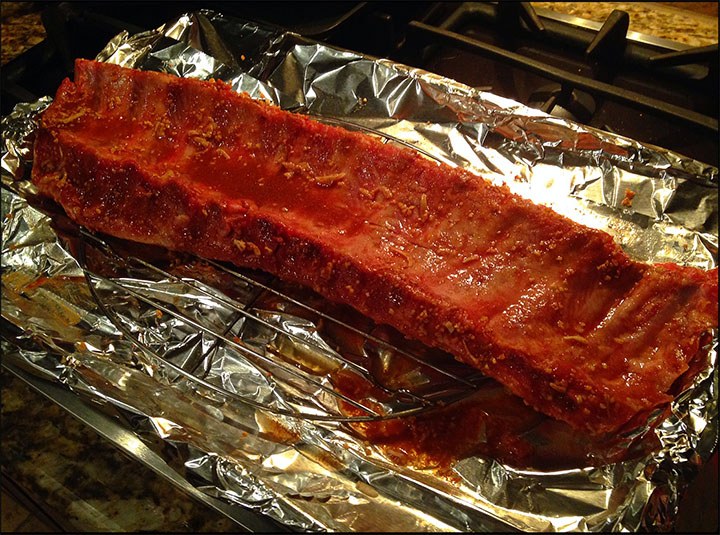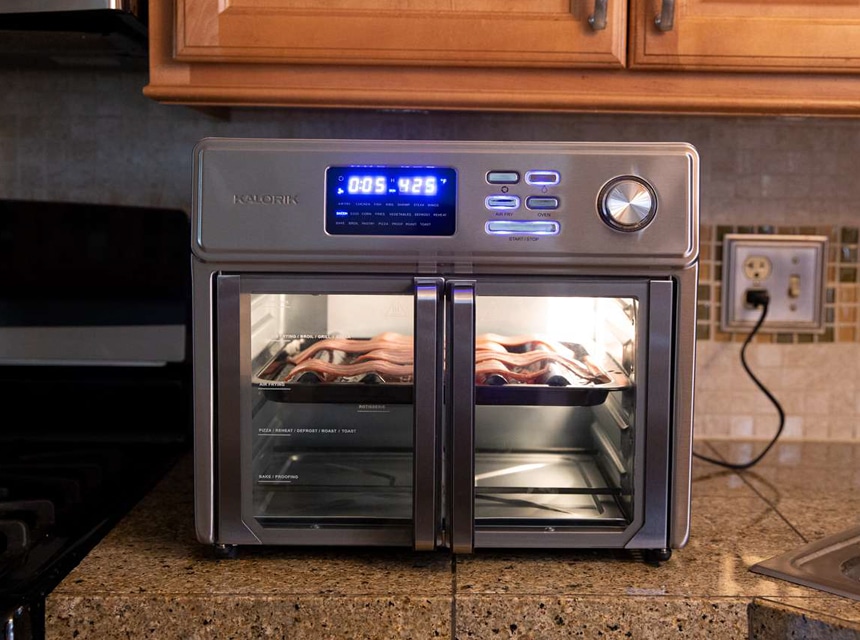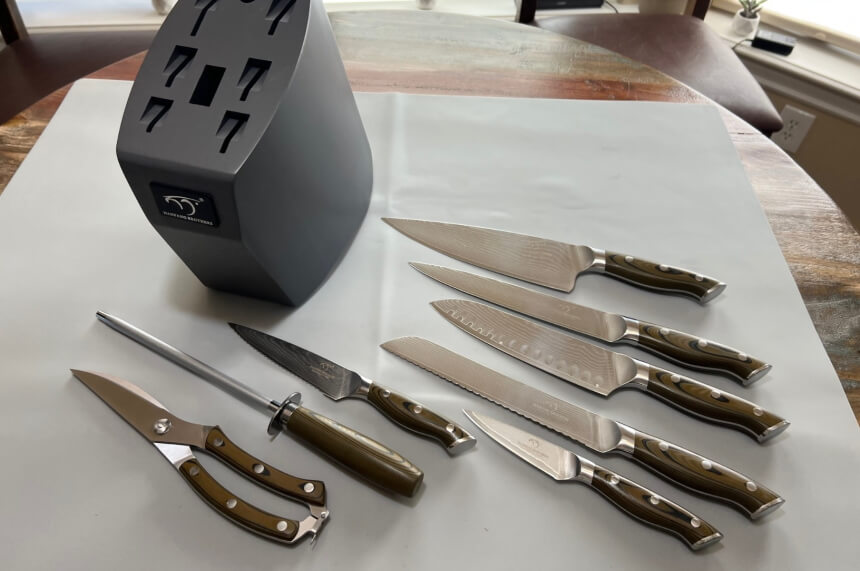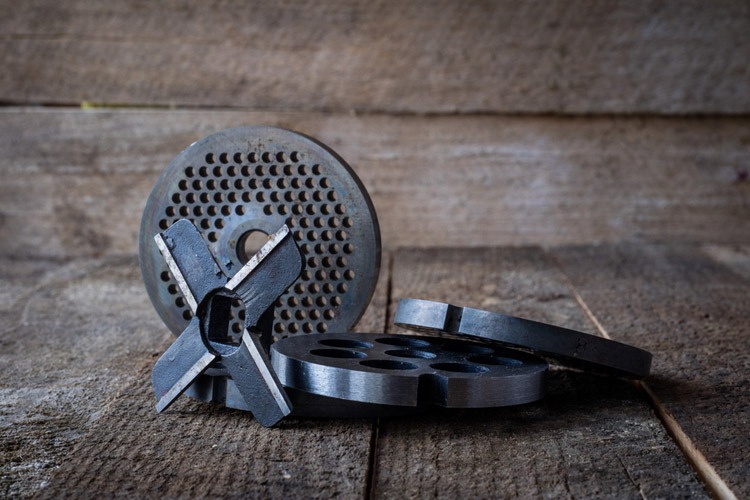

If you’ve ever tasted dry-aged meat at a restaurant or somewhere else, then you’re aware of its distinct taste and texture. Thanks to the special impression of dry-aged meat, you’re probably wondering how you can dry age at home without the large fridges. What if we told you dry age bags can help you dry age meat in your home refrigerator?
Dry age bags are made from a special membrane foil to seal meat and help it age properly throughout the time it spends in the fridge. Specifically, these unique bags are permeable to air on one side but don’t allow germs and water to penetrate your meat. They’re also easy to use and effective.
Read on and we’ll tell you everything you need to know about dry-aging, including how it works, how to choose the right meat for the process, and the steps involved in getting the job done.
Many people only know that dry-aged meat is unique but they don’t actually know what dry-aging is. If you’re among those people, you’re about to leave the group. Dry-aging means aging large cuts of meat before trimming and cutting them into steaks. This process can take several weeks or even several months based on your preference.
As we hinted at the beginning of this article, dry-aging is done to significantly enhance the flavor of the meat. Apart from that, the process also makes meat far more tender than it used to be.
Besides, dry-aging typically requires large space and accurate monitoring of humidity and temperature. Hence, it’s mostly practiced in fancy steakhouses. However, with the proper knowledge of how the process works, you can dry age your meat at home thanks to the advent of dry age meat bags.
Of course, you won’t get the steakhouse standard at home but you’ll still enjoy far more flavorful and tenderized meat.
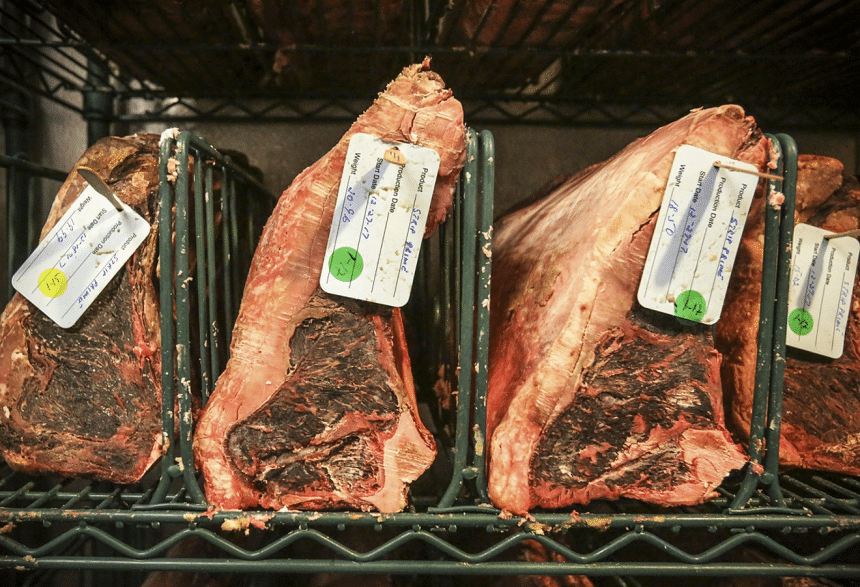 How it works
How it worksAfter knowing what dry aging is, we can bet that the next question on your mind is, “how does it work?” Well, you’re about to find out. When you leave your meat to dry age, its enzymes render down the collagen between muscle fibers, thus imparting a richer, deeper flavor and tenderizing the meat.
Moreover, three main changes occur to the meat’s structure when dry-aged. We’ll discuss these changes below:
Moisture loss: This is the major thing that comes out of dry-aging meat Trusted Source A comparative study of beef quality after ageing longissimus muscle using a dry ageing bag, traditional dry ageing or vacuum package ageing - PubMed The objective of this study was to investigate beef quality of longissimus muscle after ageing in dry ageing bags, traditional dry ageing or vacuum for 8 or 19 days. Lower ageing weight loss, odour score and microbial growth were found in meat aged in dry ageing bags than after traditional dry agein … pubmed.ncbi.nlm.nih.gov . Dry-aged meat loses a significant percentage of its initial water volume, thus helping to concentrate its flavor. The outer layers of your meat account for a significant portion of the moisture loss.
Tenderization: This process involves the meat’s enzymes breaking down some of the connective tissues and tough muscle fibers. This action effectively tenderizes the meat.
Flavor: This change is triggered by several processes, including bacterial and enzymatic actions. When meat is properly dry-aged, it will develop deeply nutty and beefy aromas.
The dry-aging process typically also supports the growth of certain mold species on the meat’s external surface. Rather than cause spoilage, the mold growth forms a crust on the meat’s surface that you’ll have to trim off before cooking.
Choosing the meat for dry-aging is a pretty important detail because frankly, not all cuts of meat can go through the process and deliver the best results. One key consideration is the fat content of the meat. In essence, try to choose meat with a large proportion of fat content and good thickness.
Some of the best cuts of meat for dry-aging include boneless ribeye (ribeye), top butt (sirloin), and strip loin (New York Strip). Each of these steak cuts ages well and improves greatly in texture and flavor with dry-aging.
However, some other meats such as pork don’t dry age well although it’s not impossible.
If you’re having trouble finding the right cut of meat, an impressive option you can consider is the USDA Prime Porterhouse, which boasts half New York strip and half filet mignon. This beef is a thick and well-marbled cut. Apart from that, it has a good amount of fat running through it, making it perfect for dry-aging.
After choosing your meat, the next thing to do is start the dry-aging process with your dry age steak bags. Below, we’ll discuss the necessary steps you must follow for the best results:
Before anything, you must choose the cut of meat you’re going to dry-age. As we advised earlier, choose a cut with good fat content. Also, the cut should be well-marbled since dry-aging removes a lot of moisture and good marbling can save the end product from completely drying out when cooked.
Although dry age bags for beef are great for aging meat in your home fridge, you’ll have to remove the crusted outer layer at the end. Hence, the thinner the meat, the less flavorful steak you’ll be left with after trimming. So, we advise that you choose a reasonably thick cut of meat.
Additionally, don’t go for cuts with a large bone in them to avoid puncturing the dry age beef bag. After you’ve found the right cut, get the best meat cleaver you can find to slice the amount of meat you want.
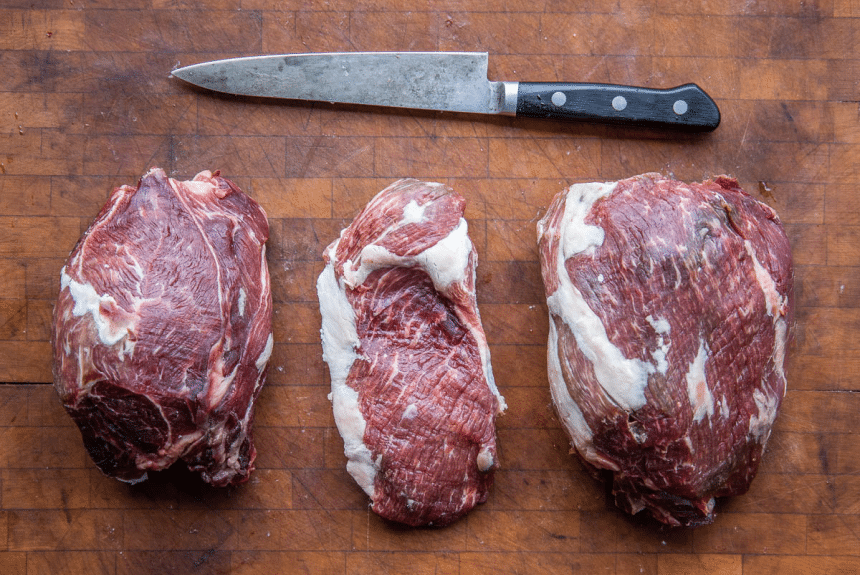 Step 2. Use vacuum sealer
Step 2. Use vacuum sealerThe next step is to get your beef in the dry age bags foodsaver. If you don’t know which dry bag to trust, we recommend the popular and high-quality UMAi Dry Breathable Membrane Bags. A packet you buy features 3 dry bags that allow you to dry age your beef for up to 45 days.
After getting your beef in the right dry age bag, you should vacuum pack the bag to ensure that your meat ages properly. If you don’t own a device to seal the bag, we advise that you purchase the best vacuum sealer to get the job done.
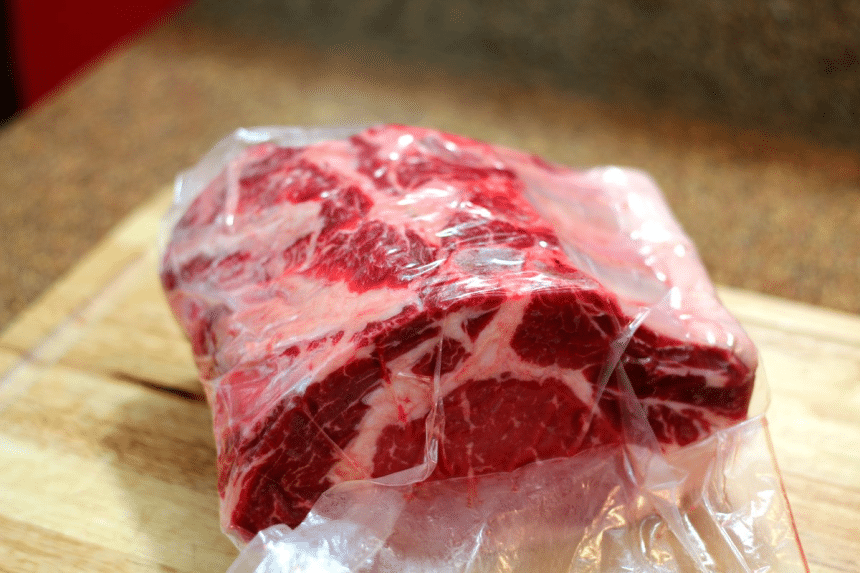 Step 3. Freeze the bag
Step 3. Freeze the bagAfter sealing the meat into the dry age vacuum bag, put it in a tray in your fridge to freeze it.
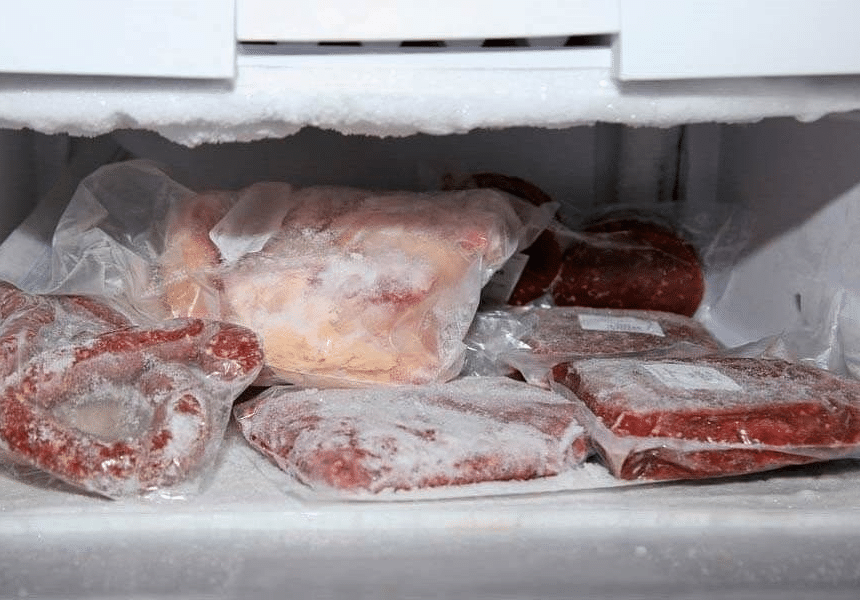 Step 4. Wait
Step 4. WaitNow, all you have to do is wait as the meat continues to freeze in your refrigerator. You can decide to dry age it for any duration of your choice but let it stay refrigerated for at least four weeks. To ensure that both sides of the meat are being well dehydrated, turn the bag occasionally.
After refrigerating for the period of your choice, remove the meat from the dry age bag. By now, the beef would have formed a much harder, darker crust on its outer surfaces. You’ll need to trim off the crust before going ahead to cook the meat.
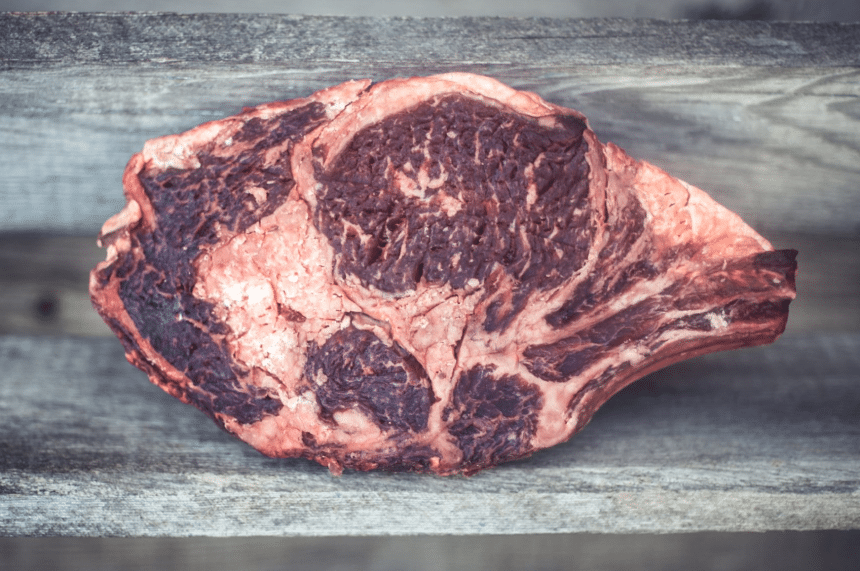 FAQs
FAQsWe understand that you might still have questions after efforts to simplify the dry-aging process. Don’t fret; we’ll answer the most frequently asked questions below.
Although the most common timeframe for dry-aging meat is 30 days, you can find steaks that are dry-aged up to 240 days. Dry-aging meat for more than 200 days won’t cause it to spoil as you might have feared as long as you control the levels of bacteria and moisture properly. Of course, the longer the aging process, the better the taste and the more tender the meat will be.
Moreover, you should check the maximum period that the dry bag you’re using is made for and try not to dry age past the timeframe to prevent spoilage.
Earlier, we explained that pork is not ideal for the dry-aging process. You probably want more explanation for that premise. Pork fat is quite unsaturated, making it prone to developing rancid flavors during the aging process. Plus, pork is likely to be taken from younger animals with inherently tender meat, thus partly defeating the need for dry-aging.
Also, pork’s high-water content makes aging risky in terms of meat loss and spoilage. So, there you have the reasons why shouldn’t dry-age pork.
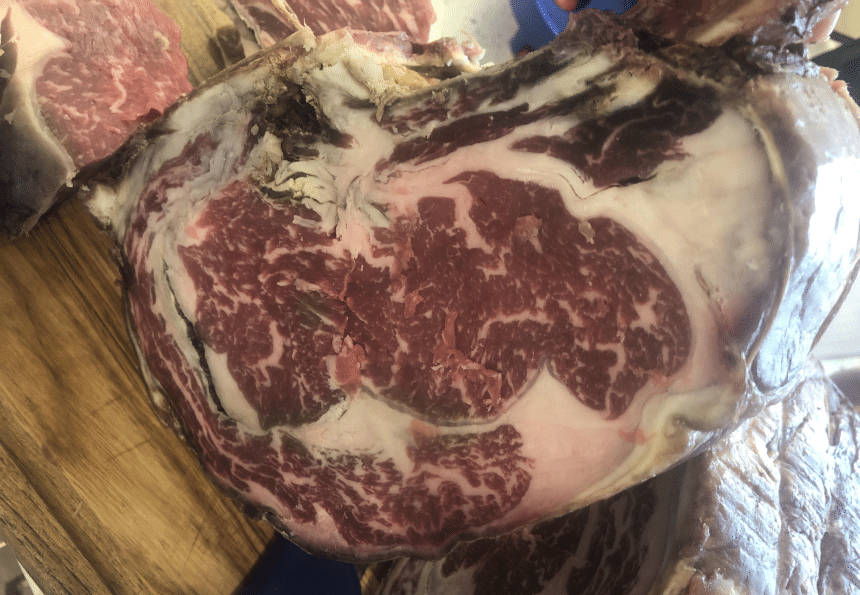
Hence, you can’t rule out spoilage when dry-aging. But how can you tell if dry-aged beef is bad? There are a few developments to look out for. The first sign of bad dry-aged meat is a rotten and unpleasant smell. This smell is unmistakable and you won’t miss it provided that you have a good nose.
Another way to tell a bad dry-aged beef is by feeling it. A bad beef will leave a lasting impression if you stick your finger into it.
As you now know, dry-aging meat is an incredible way to improve its texture and flavor. A good way to do this in the comfort of your home is by using dry-aging bags. Just vacuum seal your meat into the bag and put it inside your home refrigerator for a reasonable period as you deem fit.
This article contains every important piece of information about dry-aging meat and the processes involved in getting the job done. Also, we carefully explained how to use dry age bags properly so we are counting on the fact that you have everything you need to dry age your meat without trouble.
However, if you’re not down for the dry-aging process and you’re only interested in drying your meat to prevent spoilage, a high-quality dehydrator for jerky seems like the smart and convenient choice.


